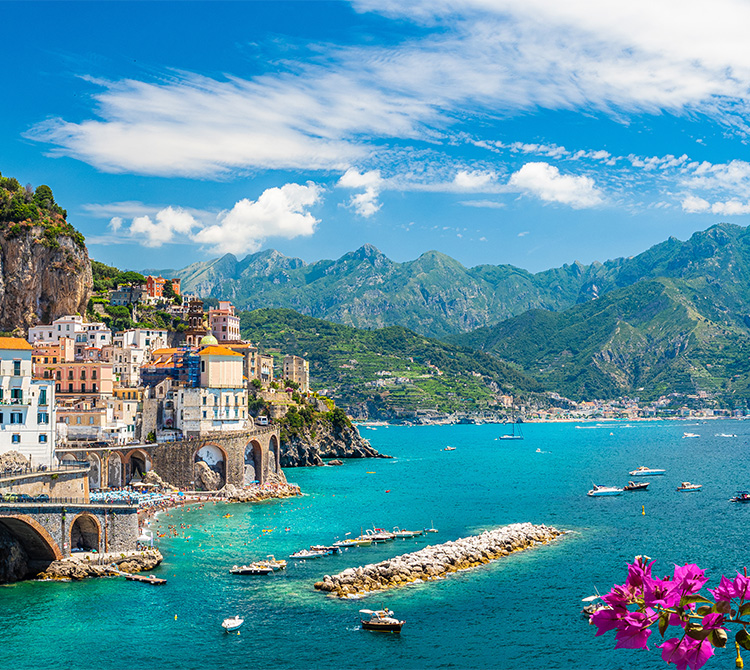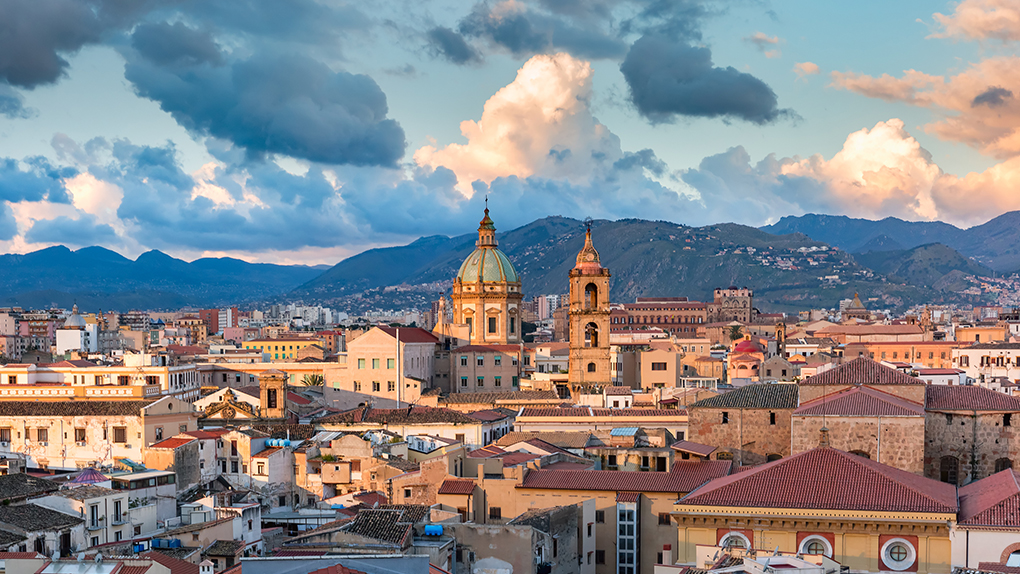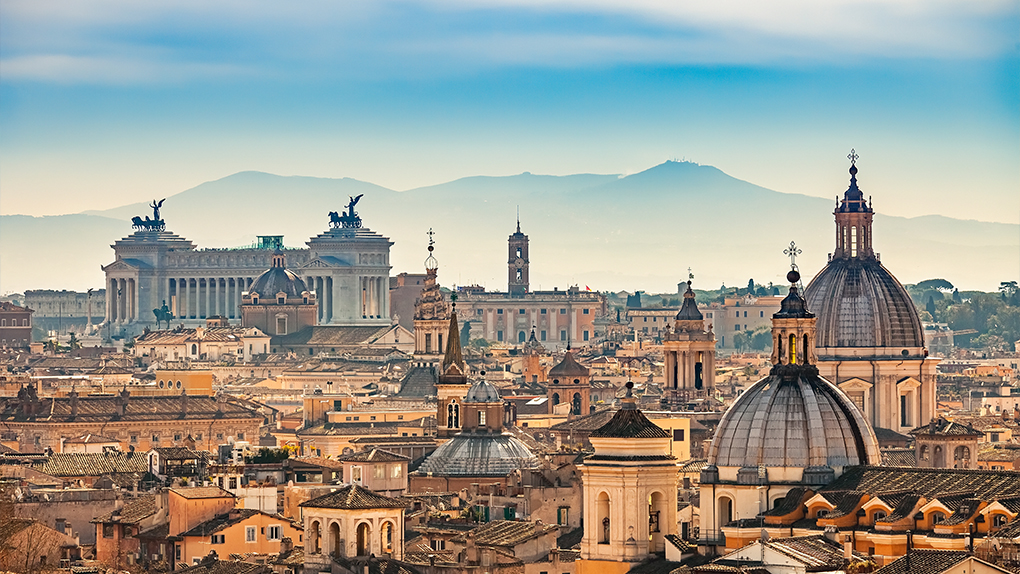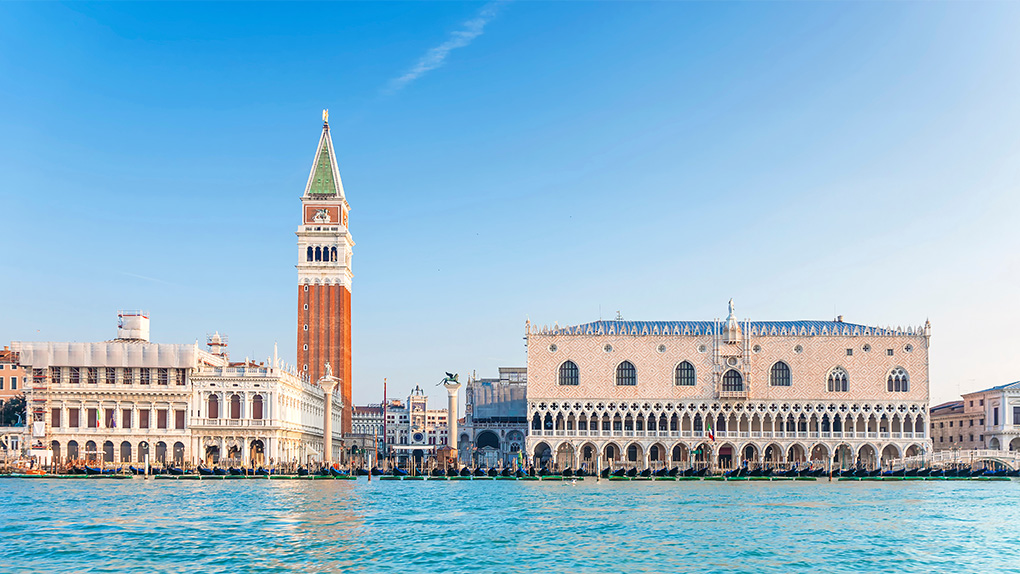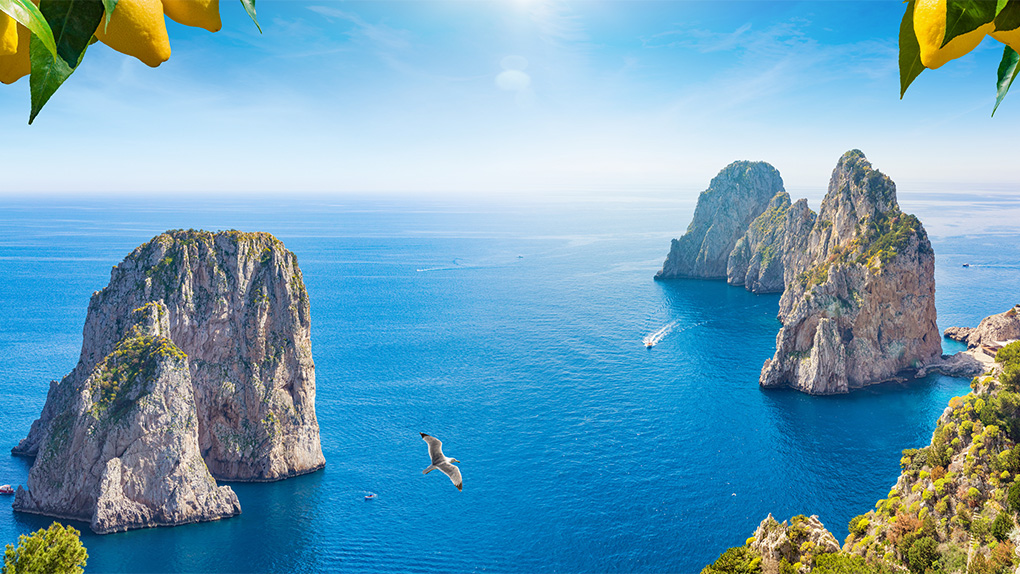The Amalfi Coast is one of the most picturesque spots of Southern Italy, here are 5 places to visit to enjoy what the area has to offer.
The Amalfi Coast is a stretch of coastline on the southern coast of the Sorrentine Peninsula in the Province of Salerno in Southern Italy. This beautiful spot of Italy is a popular tourist attraction, dating back from Roman times, and today is a destination for those who want to experience the Dolce Vita and the beauty of Italy. Famed for its picturesque villages, crystal clear sea, dramatic flora, and delicious food, the The Amalfi Coast is internationally renowned for its beauty, and as of 1997 it has been listed as a UNESCO World Heritage Site as a cultural landscape.
Here are 5 must do stops when visiting the Amalfi Coast.
Amalfi
First and foremost a stop at the town which lends its name to the coast is a must. In Amalfi you can visit architectural wonders like the Cloister of Paradise, with its Arab influences, and the Medieval Cathedral of Saint Andrew, which blends Norman and Byzantine styles. Take a stroll around the cobbled streets, look down towards the azure waters and make sure to sample the coast’s legendary limoncello after a fish based gourmet meal.
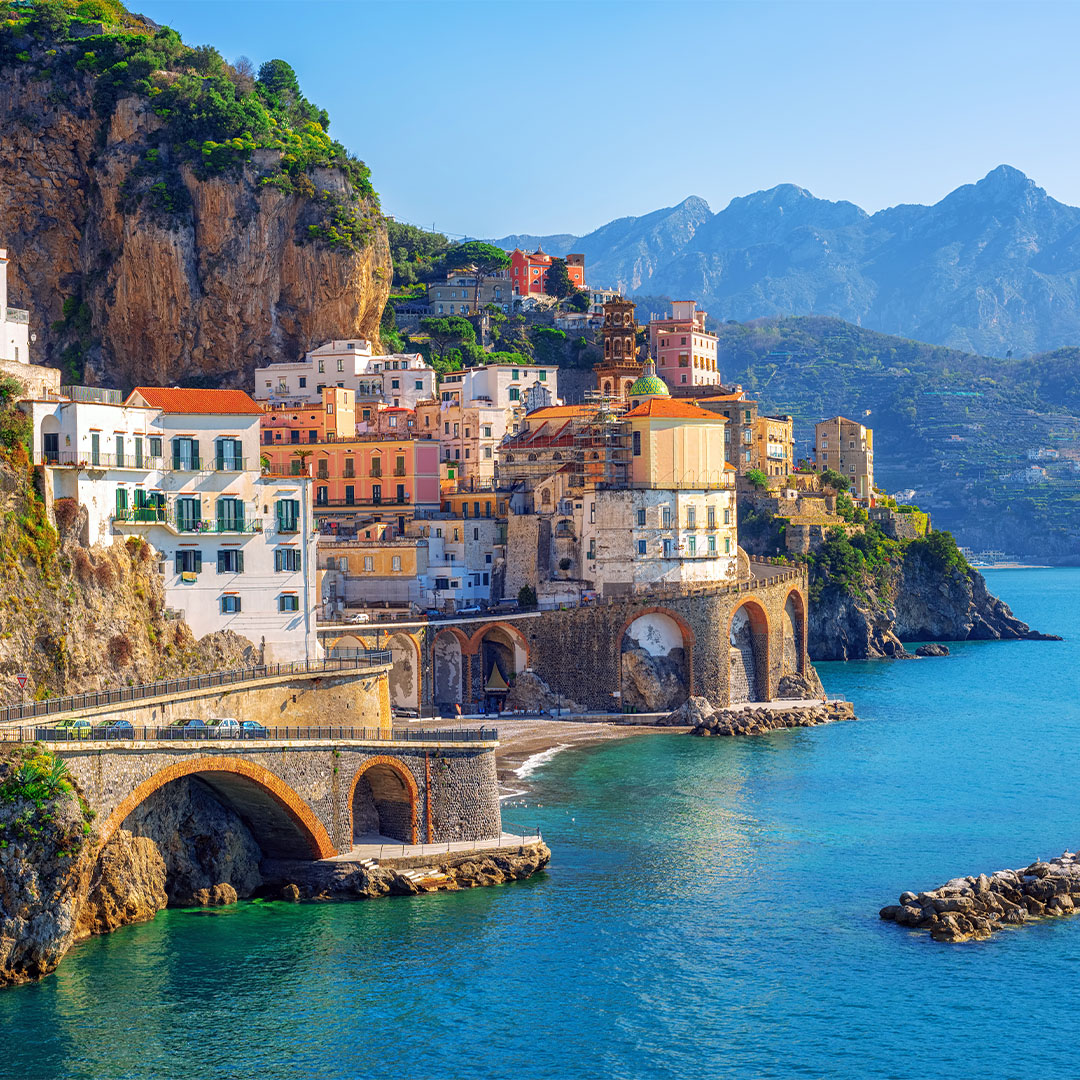
Ravello
Ravello dates back to the 5th century, and boasts an important place in the history of the Amalfi coast. That said, Ravello is mostly famed in popular culture as the playground for the rich, famous and artistic, with famed personalities such as Giovanni Boccaccio, Richard Wagner, Edvard Grieg, M. C. Escher, Virginia Woolf, Greta Garbo, Gore Vidal, André Gide, Joan Mirò, Truman Capote, Tennessee Williams, Graham Greene, Jacqueline Kennedy, Leonard Bernstein and Sara Teasdale spending parts of their summers there. Today Ravello, with its stunning luxury resorts, vistas and quiet elegance continues to host the jet set from around the world.

Positano
Positano remained a largely unknown fishing village until the first half of the twentieth century, when it began to attract large numbers of tourists, especially after John Steinbeck published his essay about Positano in Harper’s Bazaar in May, 1953: “Positano bites deep”, Steinbeck wrote. “It is a dream place that isn’t quite real when you are there and becomes beckoningly real after you have gone.” Today it is a favourite of tourists from all over the world, with its colourful houses, the majolica tiled dome of the Church of Santa Maria Assunta, azure sea and overall southern Italian charm featuring in vacation snaps of the movers and shakers from Hollywood, fashion and music. The fishing village has also featured as the setting of many films, and musically speaking it boasts the role of muse for one of The Rolling Stones hits, as the song “Midnight Rambler” was written in the cafes of Positano by Richards and Jagger while on vacation there.
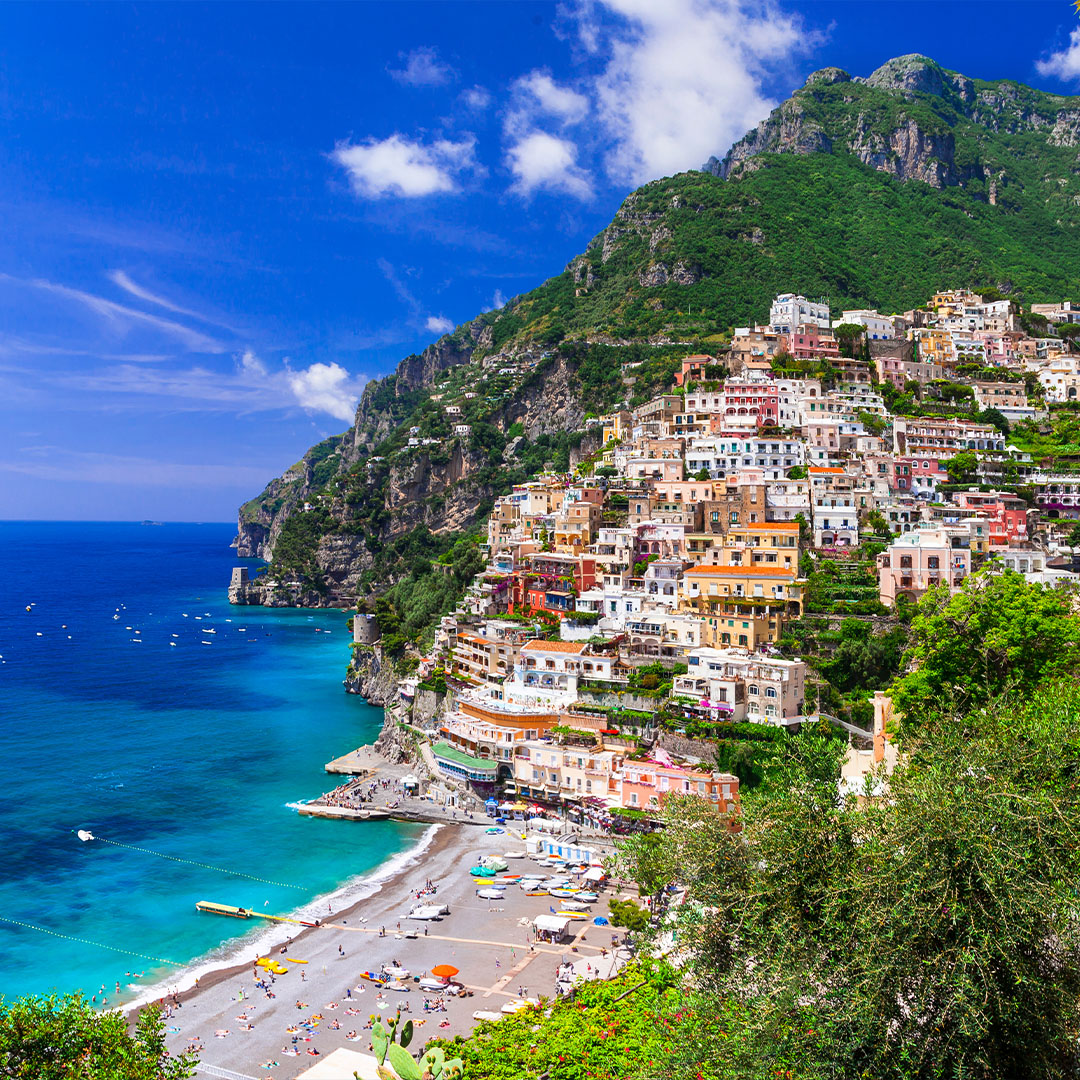
Sorrento
Moving a little further afield, taking the stunning Amalfi drive, a must see spot is Sorrento, the pretty town overlooking the Bay of Naples, Vesuvius and the Isle of Capri. Sorrento dates back to 600 BC, yet its popularity is partly thanks to its most famous produce, lemons and limoncello, and its role as muse for some of the most well known songs about Italy. It was quite famously featured in the early-20th-century song “Torna a Surriento” (Come Back to Sorrento) with lyrics by Giambattista De Curtis, brother of the song’s composer, Ernesto De Curtis, but perhaps the most famous masterpiece which has spread the fame of Sorrento in the world, is “Caruso”, a song composed in Sorrento, in the summer of 1985, by the Bolognese singer-songwriter Lucio Dalla, which has been covered by many artists including Pavarotti and Bocelli.
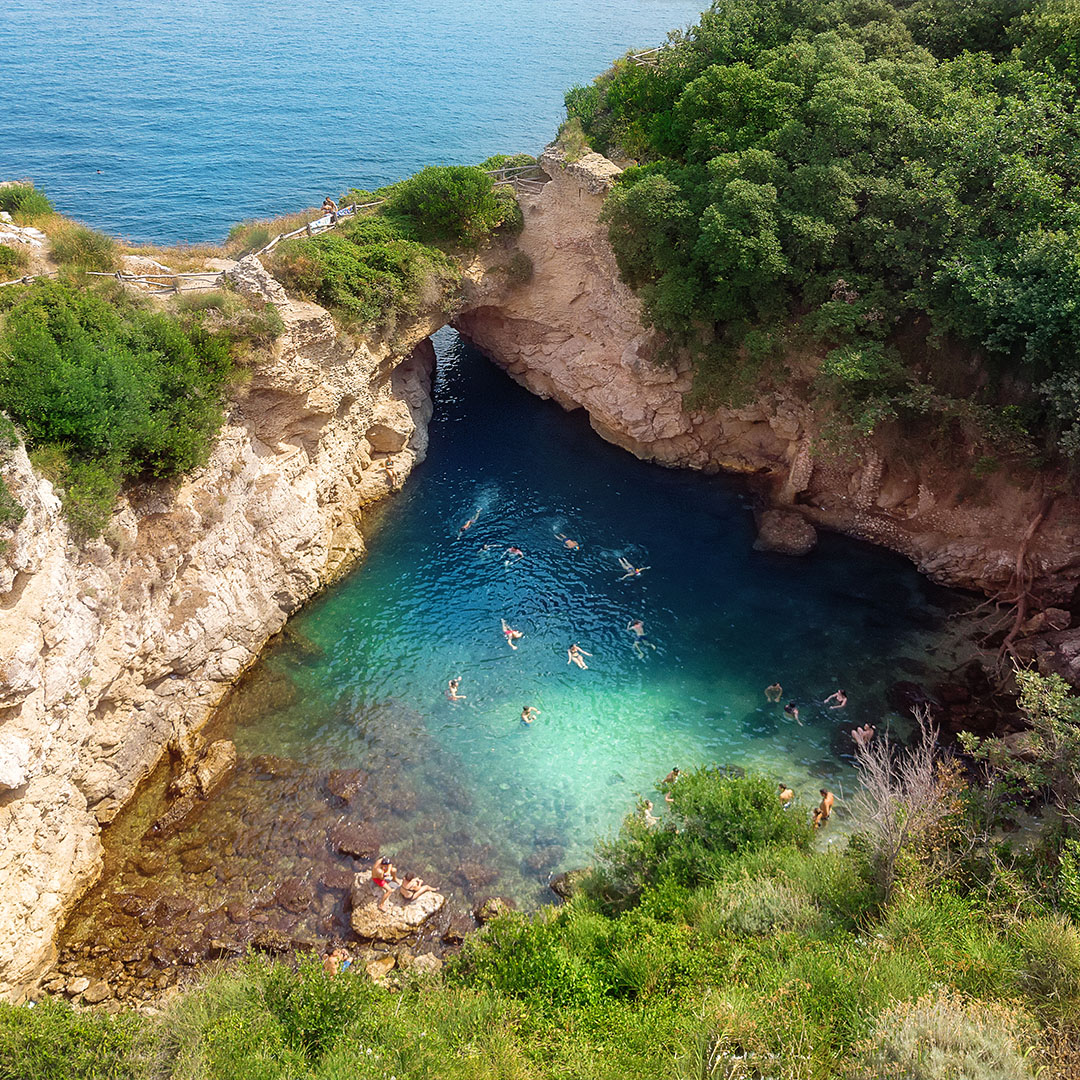
Capri
It would be a shame to visit the Sorrentine Peninusla and not take a trip to the famed island of Capri. A resort since Roman Times, the island has plenty to offer notwithstanding its diminutive size: twelve churches, seven museums and several monuments, as well as the natural wonder of the Blue Grotto, where the crystal formations reflect the blue waters of the sea to create a stunning effect, and the iconic Faraglioni, two rocky formations which rise up from the sea and have become a symbol of Capri. The centre of the island, both geographically and socially is the Piazzetta, the meeting place of the rich and famous since the island’s ancient roman beginnings as an exclusive holiday spot.



